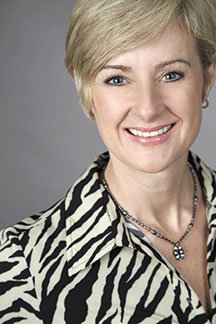INTERVIEW

It’s a myth that governments can step in to save the market.
Secular Cycles In Gold, Currencies, Equities
Juggling Dynamite
With Danielle Park
With more than 18 years of professional consulting experience, Danielle Park is an attorney as well as a Chartered Financial Analyst (Cfa) and finance author. Park is a regular guest on North American news media and a popular keynote speaker about investment markets and money. She is the author of the best-selling book Juggling Dynamite and a popular financial blog, www.jugglingdynamite.com. She is a member of the internationally recognized Cfa Institute, the Toronto Society of Financial Analysts (Tsfa), and she continues to be a member of the Law Society of Upper Canada. Stocks & Commodities Editor Jayanthi Gopalakrishnan and Staff Writer Bruce Faber interviewed her on February 8, 2010, via telephone.
Danielle, how did you get interested in the markets?
I was an attorney for a number of years before I was recruited by a sell-side securities firm in the mid-1990s. I became a portfolio manager, finished my Cfa, and cofounded our current company, Venable-Park Investment Counsel, with my partner and market technician, Cory Venable, in 2003.
Doing historical research in the late 1990s, we came to see that the 1980s and 1990s were the best and smoothest secular bull in stocks ever in human history.
We also saw that the “easy gain buy & hold” period was not likely to continue, and we were likely headed into a much more challenging environment within 15 to 20 years, of almost the opposite conditions that the world had known in the 1980s and 1990s.
We came to this realization because I am a macro-market analyst and my partner is a Chartered Market Technician (Cmt), and we both have a passion for market history and cycles in human behavior, so between our training and studies from other periods in history, like the 1920s, 1930s, 1940s, and 1950s, we put two and two together and said, “Oh, no, look what market conditions may be coming our way!” Then we asked, “What kind of an investment strategy will people need if they are going to retain their capital and get some growth in this difficult period?”
So what did you think would be a good strategy?
We came to the conclusion that the passive buy & hold, the passive allocations to equities that individuals, mutual funds, and pensions were using in the 1980s and 1990s, were going to be a disaster in this coming period.
This was, of course, all supposition on our part, or educated guessing; no one knows the future until it actually arrives, after all. But we reasoned that probabilities favored that we were going into a long or “secular” bear period like we had seen in the 1960s and 1970s, and the 1920s to the 1940s, and that a fundamentally different asset allocation approach was required. We came to a number of basic principles.
Which were?
That you needed to have tactical allocation to risk assets, you could not just buy & hold anything, you had to have a set of rules for when to buy and when to sell again. In this environment, when to buy and when to sell became the most important call. Commodities were likely to be in a secular bull period during this time when stocks were in a secular bear period. So that could be good for the Canadian market, for example, but it would be extremely volatile. If people tried to passively allocate to stocks or commodities during this environment, it was likely to be very painful, a lot of risk and volatility with very poor returns. Timing was going to be more important than stockpicking or pretty much anything else.